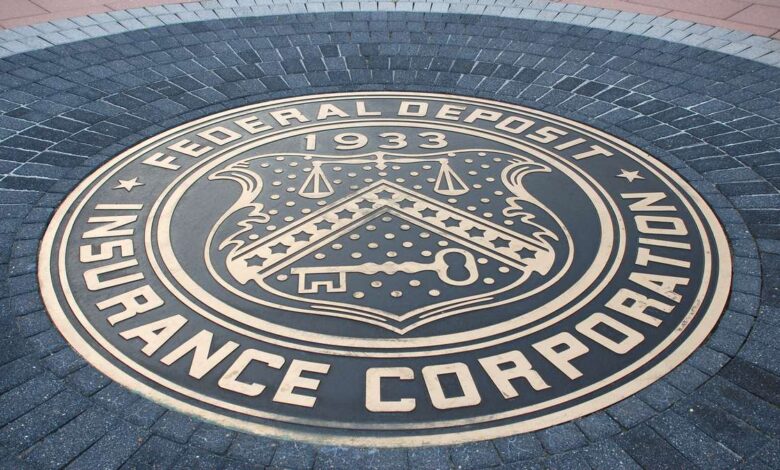5 Most Important Facts About the Federal Deposit Insurance Corporation

The Federal Deposit Insurance Corporation (FDIC) plays a critical role in United States financial system and some would even say the financial system could not exist in its current form without it. The FDIC was created by the United States Congress in 1933, a period when the country was in economic turmoil and where there was widespread fear of the banking system collapsing entirely. This was the time of the Great Depression when several banks had shut down, causing significant financial losses for depositors.
Fearing the failure of more banks, consumers rushed to withdraw their money for fear of losing their hard-earned savings and having nothing to fall back on. This served as the catalyst for the creation of the FDIC. In this article we will cover 5 key facts you need to know about the FDIC and its role in the financial system of the United States.
1. The FDIC Provides Insurance to Depositors
As the institution’s name would indicate the FDIC provides insurance to depositors across the country. This insurance is only provided to depositors at participating institutions. Currently there are almost 4,800 institutions that are insured by the FDIC. While the list of banks in the United States that are insured by the FDIC has declined over time this isn’t because fewer banks are electing for FDIC insurance, but due to wave of consolidation among banks. The insurance that is provided by the FDIC covers Individual accounts per category for amounts up to $250,000. The ownership category consists of the title of the depositor’s account at the insured financial institution. This means that even though an individual might have more than $250,000 at a financial institution, if the amount is spread across multiple ownership categories, they can still be fully insured by the FDIC.
2. The FDIC is not funded by the Government
While the FDIC was created by the United States Government, unlike other regulatory departments, the FDIC is not funded by the government. Instead, in return for providing the participating institutions with insurance coverage, the FDIC collects insurance premiums from the thousands of institutions that it insures. In 2021 the FDIC collected more than $7 billion in fees and assessments from its participating institutions. These premiums eventually fund the insurance to cover the deposits and much else. The collected premiums are paid into the Deposit Insurance Fund, which is invested and is the source from which the FDIC will pay out insurance in the event of loss. As of December 2021, the Deposit Insurance Fund had a balance of $123 billion.
3. The FDIC is Overseen by a Board Appointed by the Government
The FDIC is overseen by a five member Board of Directors, which are appointed by the United States Government. The FDIC is also headquartered in Washington, D.C., like other Federal government organizations. However, because of the size and complexity of the banking system, the FDIC also has several field and regional offices across the country. The current acting chairman of the FDIC is Martin J. Gruenberg.
4. The FDIC Insures Many Types of Consumer Accounts
The FDIC provides insurance for deposits in many types of accounts and not just your typical checking and savings accounts. The FDIC provides insurance to money market, certificates of deposits, trust accounts, IRA’s, employee benefit plans, and much more. In addition, if the failed institution issued cheques or money orders, the insurance provided by the FDIC also covers the loss associated with those items. However, it is important to note that the FDIC does not cover stock or bond investments, mutual funds, life insurance policies, annuities, municipal securities, safe deposit boxes and investments in U.S. Treasury bills, bonds, or notes. The exclusion of safe deposit boxes is interesting given that many people pay for the privilege of accessing a safe deposit box.
5. While the FDIC Provides Insurance, it Also Supervises Banks
By now it should be clear that the primary role of the FDIC is to restore public faith in the country’s banking system by providing a backstop for consumers in the worst case scenario. However, the FDIC’s role in the banking system doesn’t end there. The FDIC is also tasked with supervising banks and currently supervises more than 50% of the banks in the United States. The FDIC is the primary federal supervisor for state-chartered banks and savings institutions that are not members of the Federal Reserve System. The regulator notes that it has three strategic goals in its supervisory efforts.
First, it wants to ensure that FDIC-insured financial institutions are “safe and sound”. Second, it ensures that its participating institutions are compliant with applicable laws, including federal consumer protection laws, fair lending laws and the Community Reinvestment Act. Third, it aims to ensure that large and complex financial institutions are resolvable in an “orderly manner”.
FDIC Exists to Protect the Interests of Consumers
The FDIC was created during a period of turmoil in the United States economy and a period of low confidence in the financial system. If consumers don’t have confidence that their deposits are safe in the banks or credit unions, they do business with, then these financial institutions become very vulnerable to instability. As a result, the role of the FDIC in ensuring confidence and stability cannot be overstated.